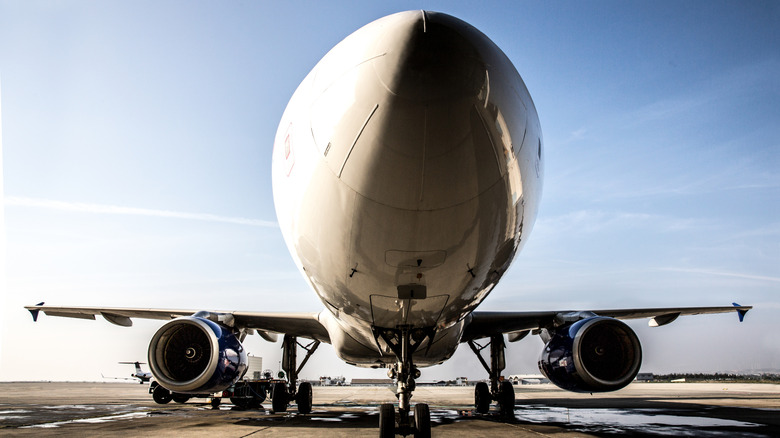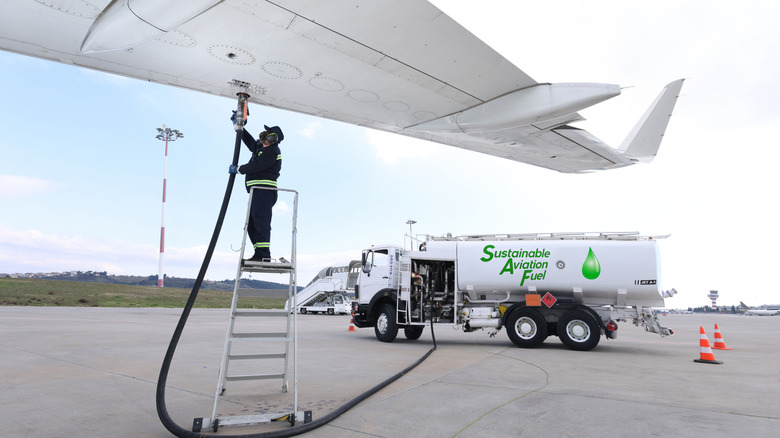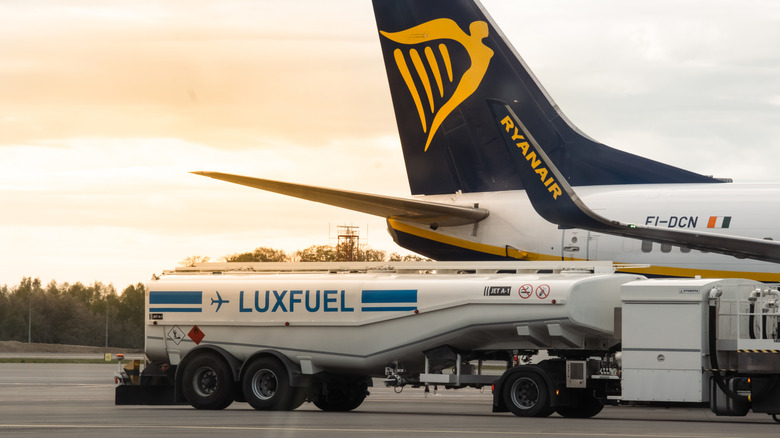For a commercial airline, of course, profits typically depend on being able to transport as many people as possible, as efficiently as possible. This, in turn, means catering to as wide a variety of flights as practical, from short haul to long haul. For airlines, then, the goal is to ensure ample fuel storage, without compromising the space that’s needed for passengers and without its positioning on the aircraft causing potential dangers. Jets like the Boeing 747 can hold monstrous amounts of fuel, after all. For these purposes, then, a lot of aircraft store their fuel – or at least large amounts of it – in their wings.
Advertisement
This brilliant piece of aeronautical design isn’t just for the sake of keeping storage out of the way, though. With the volatility of jet fuel in mind, this decision was made in order to help protect all on board should the worst happen. At the same time, it helps to balance an aircraft and spread out the significant weight it needs to bear. Fuel stored inside the wings increases their weight, and while this may seem to be undesirable, it lends stability to an airplane by mitigating some of the pressure from forces acting upon it. It’s not the only solution, though, as there are also some models that utilize their tails or fuselage to hold some fuel. The placement of an aircraft’s engine can be critical, as can the placement of its fuel.
Advertisement
The wet wing
It’s difficult to picture exactly what it means for an aircraft to store fuel in its wings. Is the inside of the wing itself literally full of fuel, a little like a piece of candy with a liquid center? In the case of a so-called “wet wing” on an aircraft, this isn’t far from accurate. In these cases, there aren’t fuel tanks in the wings, but rather the wing is the fuel tank: Empty sections within the wings can be filled with fuel, which are sealed and fastened from the outside to mitigate the dangers of leaks.
Advertisement
There are several different ways to utilize the wings for fuel storage. The iconic Wright Flyer of 1903 utilized a fuel tank that was affixed to its frame, high enough to feed gasoline to the engine through the power of gravity. For a more internal approach, U.S. Navy Captain Edward H. Eckelmeyer Jr. writes for the U.S. Naval Institute, “the real development of the self-sealing gasoline tank started with … personnel of the Naval Air Detail of the Naval Proving Ground at Dahlgren, Virginia, in the middle of 1940.” Such self-sealing tanks, the Captain went on, were built into the aircraft’s wings, and “most modern airplanes have their fuel tanks in the wing roots, that is, in the part of the wing next to the fuselage. In many cases the upper and lower surfaces of the wing itself form a part of the fuel tank.”
Advertisement
Other practical storage locations
Either wet wings or other types of wing storage for fuel offer considerable advantages, boosting the stability and performance of the aircraft as well as offering a brilliant space-saving solution. However, this is not the only option, and some aircraft have taken a slightly different approach instead. For example, the Handley Page Type O that the British developed as a prototype at the beginning of World War I had engine nacelles, which housed the model’s fuel tanks.
Advertisement
Center tanks are, instead, found in the region of the fuselage, while so-called trim tanks can sometimes be in the tail of the aircraft. Not all of a typical jet airliner’s available fuel will be located in the wings, and the airline will choose the most practical storage solution depending on the type of aircraft and the flight it’s undertaking. For instance, a larger craft taking a long-haul flight may also keep some fuel in those trim tanks, the better to balance weight across the aircraft’s body while it’s in the air. For the same reason, fuel that is stored in the wings may be retained to be used as the aircraft comes closer to its destination. Aircraft Refueler Company NV states that even the order of filling the different tanks on the body of a typically commercial airliner matters: the pressure on the wings if only a large central tank is filled can cause structural damage. Not all aircraft have unique, pivoting wings like NASA’s peculiar AD-1, after all.
Advertisement










